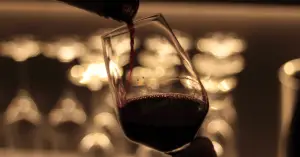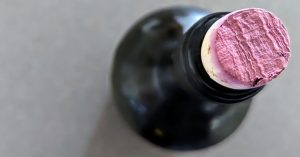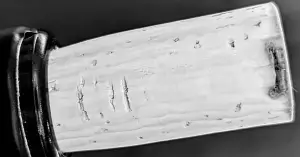
This past week I pulled out a bottle of wine that I had deliberately been saving for a special occasion. Eagerly, I poured myself a glass. It was not good.
Wine goes bad when it’s exposed to oxygen. This can happen when the cork or closure doesn’t seal properly or when you leave out leftover wine. Bad wines turn brown, will smell dull, and taste more like alcohol than fruit. Most wines go bad within 2-3 days if you leave them out after opening. All wines eventually go bad, but some will go bad before others.
Here’s how to tell if your wine went bad.
How to Tell If My Wine Is Bad: 3 Easy Steps
Here are three quick steps you can use to tell if your wine’s gone bad: Look, Sniff, Sip.
Step 1: Look at the wine
The first step to determining if your wine is bad is a visual inspection. If it is in a clear bottle, you can likely tell that something is amiss by simply looking at the wine.
- White wines in clear bottles that have gone bad will turn a deep, burnt yellow color. They lack the vibrancy of younger wines.
- A red wine that’s gone bad may have a brick red or brown hue with a faded color.
Now, some wines are made this way stylistically, but the majority of white wines bottled in clear glass are intended for early drinking (dessert wines notwithstanding).
You won’t be able to judge the wine’s color if it’s in an opaque bottle.
Pour out a small amount of the suspect wine and look for visual cues in your glass.
Step 2: Next Is the Sniff Test
Does your wine smell like vinegar? A wine that smells like vinegar is clearly rancid. Pour that baby down the sink.
Not all wine will smell like vinegar.
Old wine that’s past its peak will seem muted when you try to smell it. Not only are the fresh fruits more of a dried nature, but they may also be missing altogether.
The wine’s aroma profile fades with time. The fruit’s vibrancy slips away.
Step 3: Take a Sip
Are you brave of spirit and ready to try your suspect wine?
Nothing in the wine can hurt you, so don’t worry about getting sick. If you’re not turned off by the smell of the wine, go ahead and give it a sip.
You may want to do this next to a sink or have a spit cup ready JUST IN CASE it’s not worthy of swallowing.
A wine that’s gone rancid will taste vinegary on the palate.
Is the main taste alcohol?
Alcohol is the only component in the wind that won’t break down with time.
A wine that’s past its peak will taste muted; again, those fruits have faded into the background. An old, tired wine will burn with alcohol and a conspicuous absence of pleasant fruit or juicy acidity to help balance it out.
What to Do with Bad Wine?
I mean… do you really want to put it in your body? Technically, it won’t hurt you.
But with all the yummy wine out there, my recommendation would be to chalk this one up to a life experience and find a different bottle to uncork.
If you have a wine that you know is drinking well now, then pop open the cork and enjoy the bottle.
What’s the Difference Between Flawed Wine and Bad Wine?
Before jumping into how to determine if your wine has gone bad, it’s important to separate this from flawed wines.
Wine faults are problems that happen during the winemaking process that in turn cause the wine to have some kind of fault. Some environmental contamination or exposure to oxygen can result in the wine having some funkiness.
The fault could even be a bad wine cork. It happens. This is different than a wine that goes bad.
By saying that a wine went bad, we can infer that at some point during the wine’s life in the bottle it was drinkably delicious.
Thirsty for More?
Here’s how long different wines stay fresh after opening.
Check out this post that just covers if your white wine is bad.



